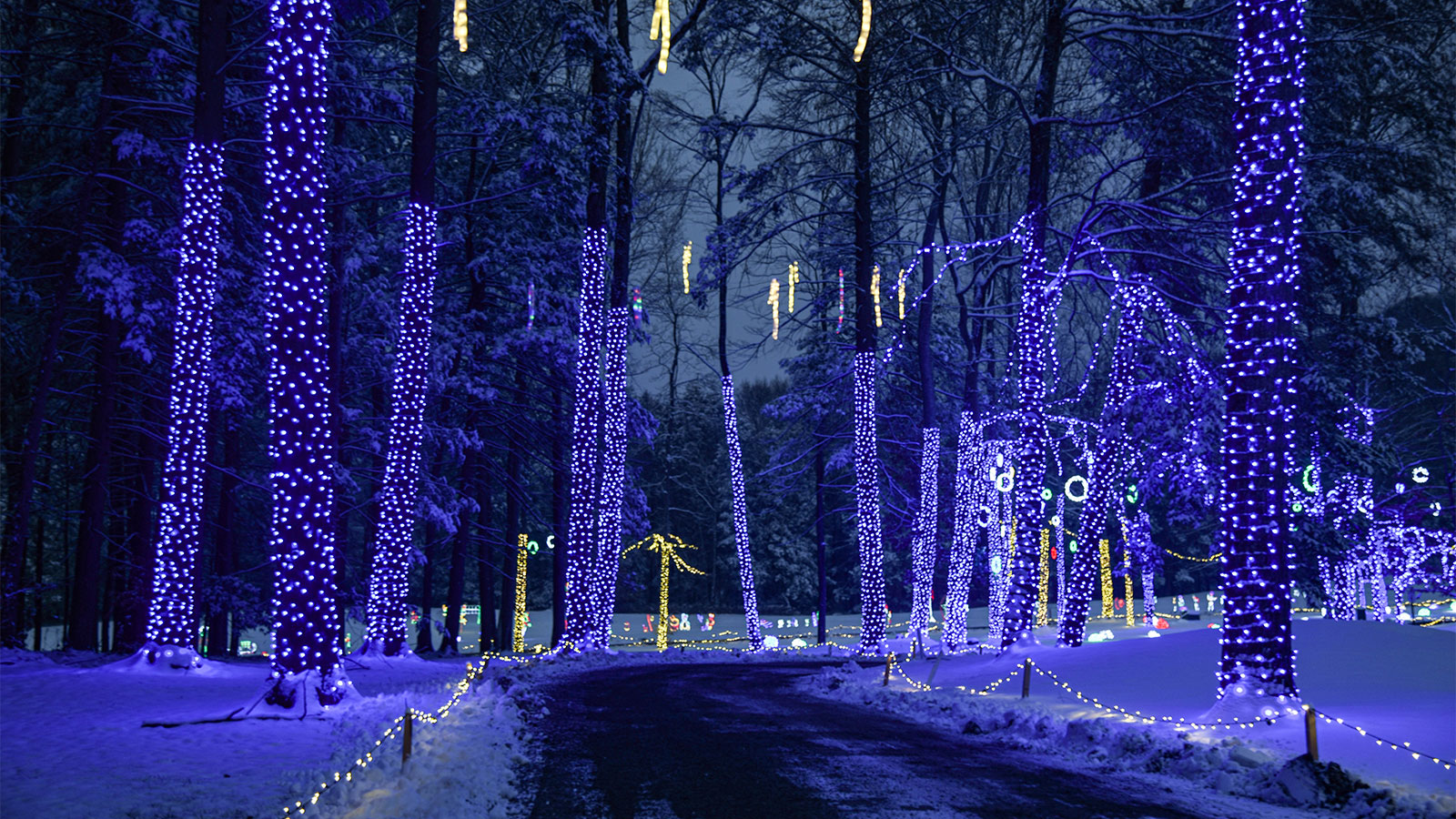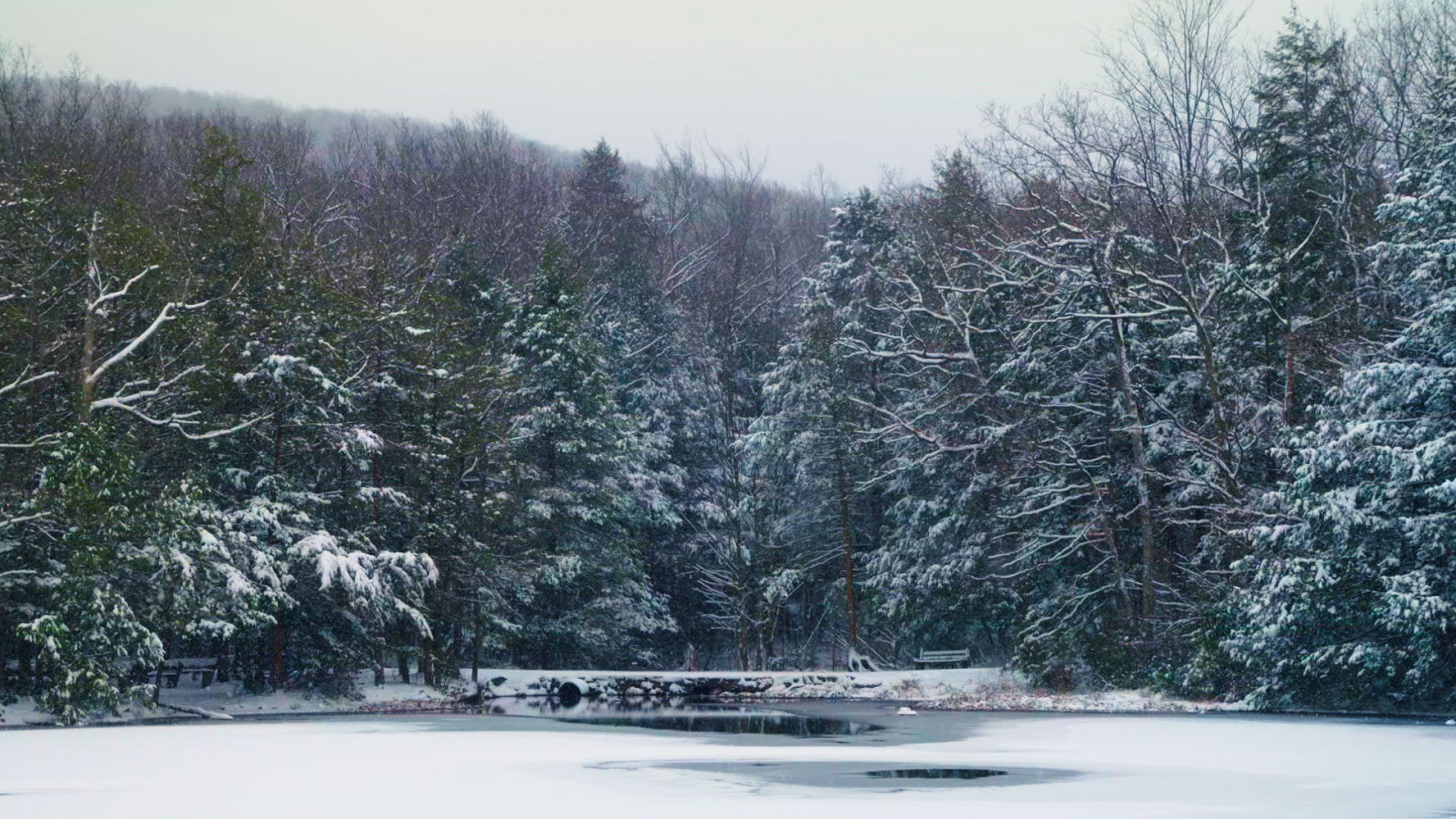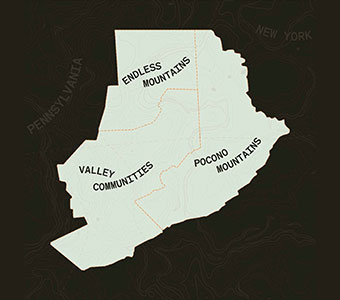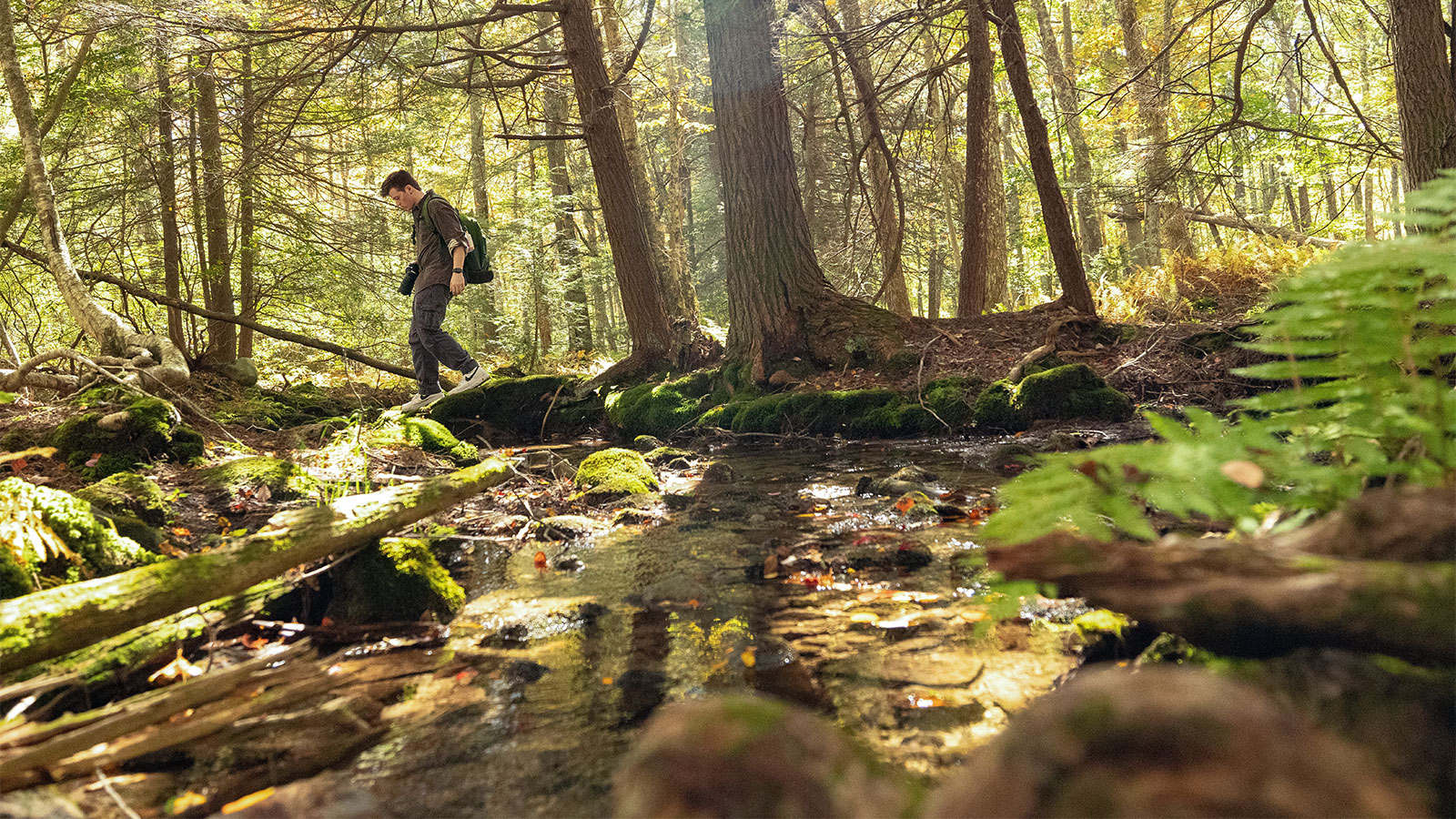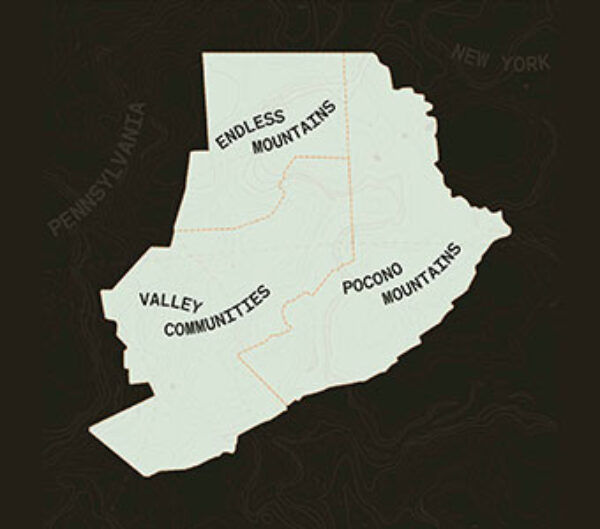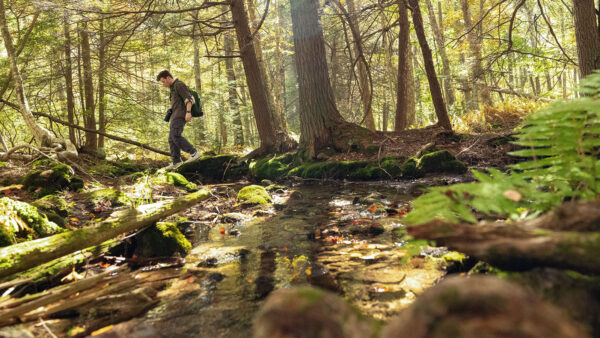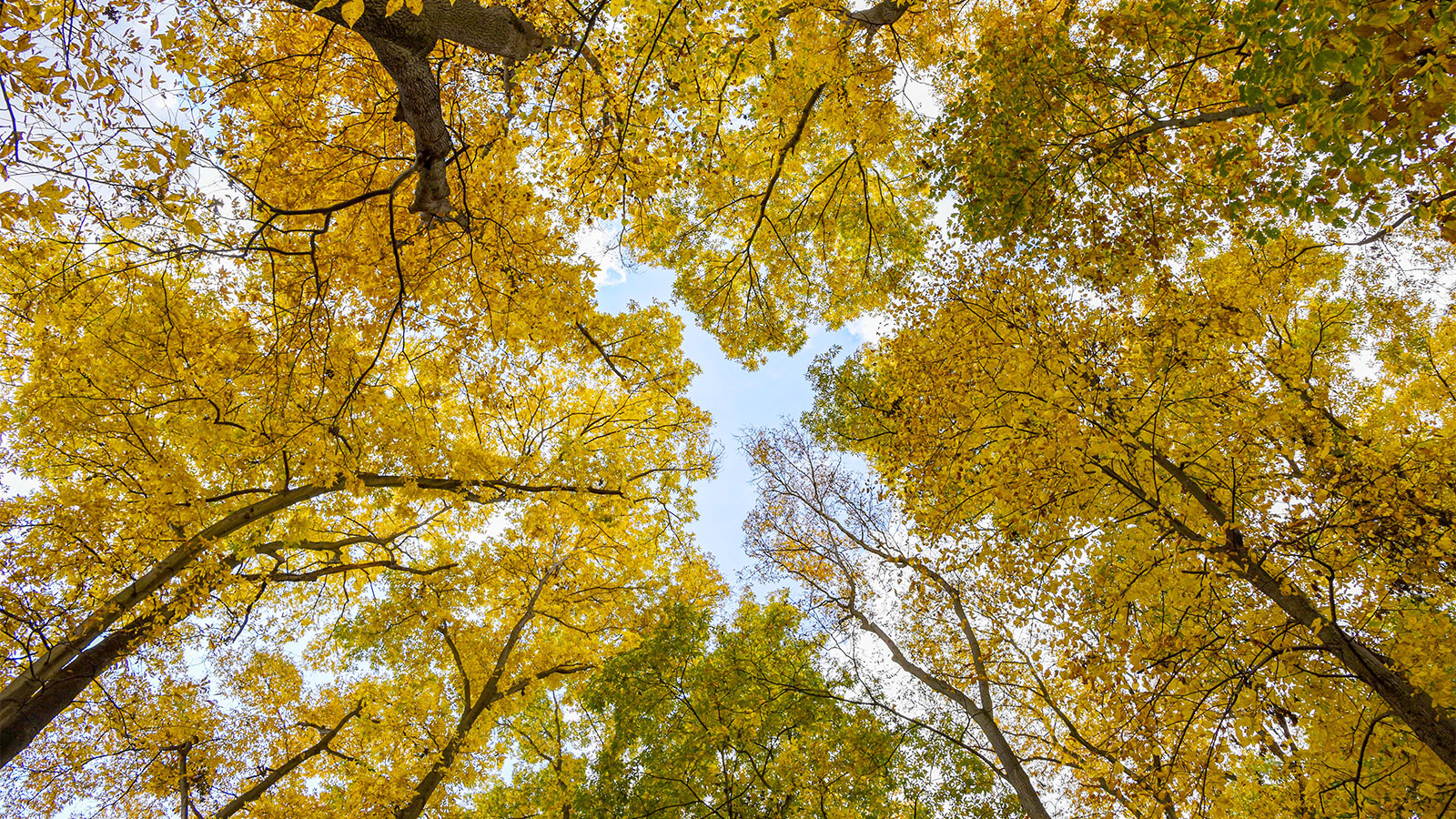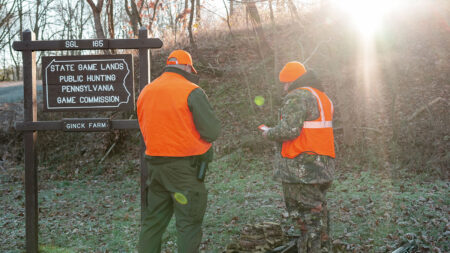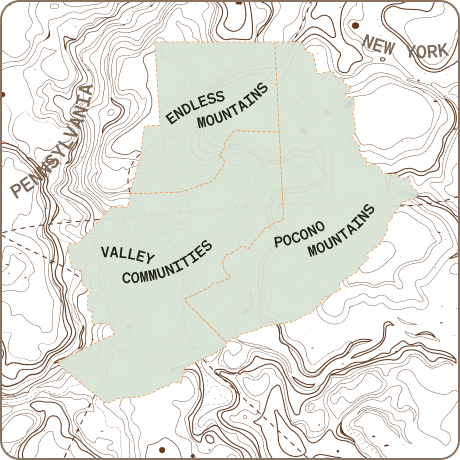DiscoverNEPA is partnering with North Branch Land Trust, a nonprofit that conserves the natural, working and scenic landscapes of NEPA. They’ll provide conservation tips and give us a look at their protected lands. Learn how you can join NBLT and do your part to protect NEPA’s natural resources.
Beware NEPA’s Spooky Cryptids
The Autumnal Equinox descends upon us this Saturday, and the transition to cool foggy mornings and striking sunsets makes the outdoors feel just a bit spookier. It is not hard to imagine a hideous Squonk dissolving in the hemlock groves or Wampus Cat slipping into the Susquehanna just before you could grab your camera. Exploring the Autumn outdoors in NEPA can feel like stepping into another world, expecting fearsome critters at every turn.
Fearsome critters are the wildlife that populate American folktales. Some are innocuous, like the Fur-Bearing Trout, whose thick coat keeps it warm in cold creeks. Others are an annoyance, like the Axehandle Hound, who are known to eat axes left unattended. And still others are downright dangerous, such as the swift Hidebehind, who can kill a person and hide behind a tree before the rest of the party knows they are gone.
Northeastern Pennsylvania has the honor of stewarding the ugliest and saddest of fearsome critters: the Squonk. Migrating from deserts and swamps, the squonk prefers to call our region’s hemlock groves home. They are covered in loose fitting skin, bumpy with warts, moles, and folds. But good luck catching a glimpse. While one can track a squonk by its trail of tears and sound of constant weeping, once they are cornered, a squonk will dissolve into a puddle of its own sadness!
These creatures were borne of campfire stories in the late 1800s—a mixture of indigenous American and immigrant European folklore, myth, and spirituality. Lumberjacks, trappers, and other traveling outdoor folks would help spread these tales for entertainment, and the myths developed each time they were told. In the early 1900s, Minnesota’s First State Forester William T. Cox worked with fellow foresters to collect, identify and illustrate these tall tales providing the first “field guide” to North American Cryptids.
Fearsome critters are still evolving, but today you might call them American cryptids. Mothman, the Jersey Devil, Jackelopes, Bigfoot—developed and shared through oral tradition with a mythos that grows each time the story is told.
“But if they aren’t real, who cares?” you might ask. Well, first of all, they might be real—there are lots of hemlocks in Pennsylvania!
But, more importantly, these cryptids can tell us a lot about the culture that shares them. Through these stories, we can learn how early indigenous and immigrant Americans felt about the outdoors and their environments. We can begin to understand what dangers they were afraid of, what real natural elements piqued their curiosity, and how vast and unknown the forests have always been.
If you are looking to learn more about Fearsome Critters and the truths that inspired them, you can join North Branch Land Trust for a folklore hike on October 5 at 10am at Picton Preserve in White Haven or on October 25 at 10am at Vosburg Neck State Park. RSVP at nblt.org/events.

